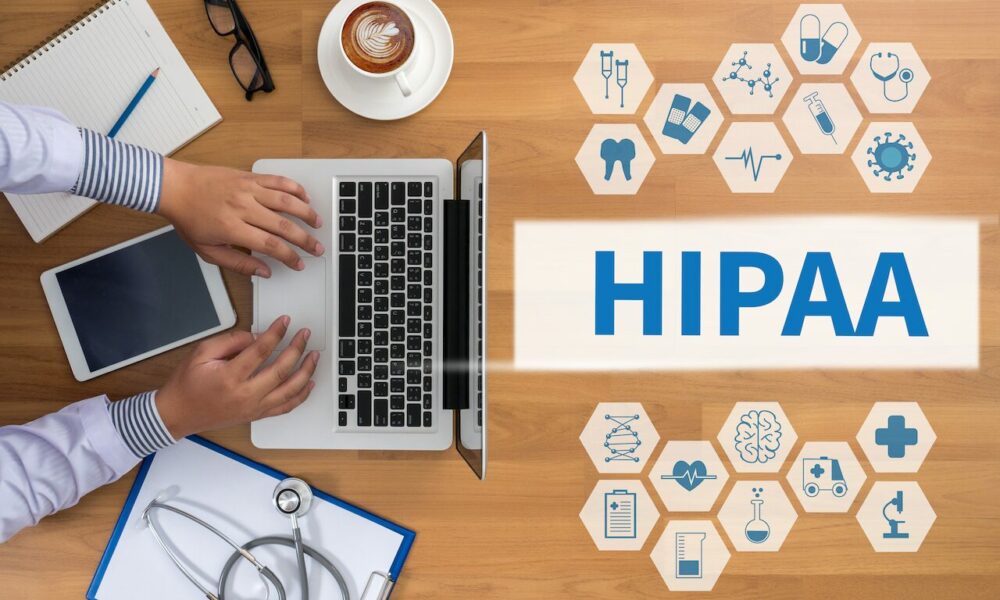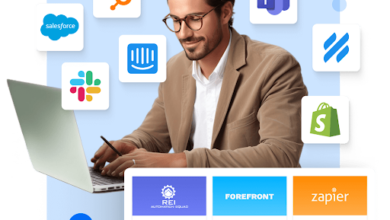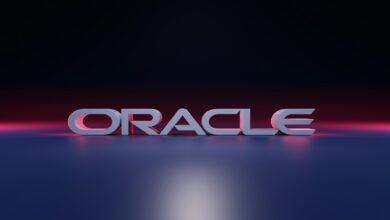Simplify Your Practice with HIPAA-Compliant Remote Patient Monitoring Solutions

In today’s fast-paced world, healthcare professionals are constantly looking for ways to improve patient care and simplify the management of their practices. One technology that has proven to be highly effective is Remote Patient Monitoring (RPM). This technology allows healthcare providers to monitor patients outside of traditional healthcare settings, such as in the comfort of their homes. However, with this advancement in technology comes the need to ensure that patient data is kept secure. This is where HIPAA-compliant remote patient monitoring solutions come into play.
Let’s explore what RPM is, how it works, why HIPAA compliance is critical, and how implementing these solutions can simplify your practice and enhance patient care.
What is Remote Patient Monitoring (RPM)?
Remote Patient Monitoring (RPM) is a system where healthcare providers can collect and analyze patients’ health data from afar. Instead of patients coming into the office regularly, they can use devices to track things like heart rate, blood pressure, blood sugar levels, and other key metrics.
The data is sent directly to healthcare providers, who can assess the patient’s condition and make treatment recommendations without needing a face-to-face visit. RPM allows for continuous monitoring, which means doctors can detect potential health issues early and intervene before they become serious problems.
How Does RPM Work?
RPM solutions typically involve three main components:
- The Devices: Patients use devices such as smartwatches, glucose monitors, or heart rate trackers to record their health information. These devices are often wireless and easy to use, allowing patients to take their readings at home.
- Data Transmission: The data collected from these devices is securely transmitted to healthcare providers. This process may occur through cloud-based platforms or specialized applications designed to keep patient information safe.
- Analysis by Healthcare Providers: Once the data is transmitted, healthcare providers analyze it to determine if any action is needed. They can then communicate with the patient to discuss any concerns or adjustments to their treatment plan.
Why HIPAA Compliance is Crucial in RPM
The Health Insurance Portability and Accountability Act (HIPAA) is a U.S. law designed to protect sensitive patient information. When it comes to remote patient monitoring, ensuring HIPAA compliance is absolutely essential. Non-compliance can result in severe legal consequences and hefty fines for healthcare providers. But more importantly, it can jeopardize patient trust.
HIPAA-compliant RPM solutions ensure that all patient data collected, transmitted, and stored is done so securely. These solutions use encryption, secure cloud storage, and other advanced security measures to keep patient information confidential.
Why Non-Compliance is a Risk
Failing to use HIPAA-compliant remote patient monitoring tools can have serious consequences. If patient data is leaked or hacked, it could lead to identity theft or medical fraud. Moreover, healthcare providers could face lawsuits and lose their licenses if they fail to protect their patients’ private information.
Benefits of Using HIPAA-Compliant RPM Solutions
By implementing HIPAA-compliant RPM solutions in your practice, you can reap numerous benefits, all while ensuring patient data remains secure. Let’s look at some of these key benefits:
1. Improved Patient Outcomes
With RPM, healthcare providers can track patients’ health in real-time, enabling early detection of potential health issues. This continuous monitoring allows for timely interventions, which can prevent complications and hospitalizations, ultimately leading to better patient outcomes.
For example, patients with chronic conditions such as diabetes or hypertension can greatly benefit from RPM. By regularly tracking their vital signs, healthcare providers can adjust medications or treatment plans before the patient’s condition worsens.
2. Increased Efficiency for Healthcare Providers
RPM solutions allow healthcare providers to monitor multiple patients simultaneously without the need for in-person visits. This increased efficiency means that doctors and nurses can spend less time on administrative tasks and more time focusing on providing high-quality care.
It also allows healthcare providers to prioritize patients based on their current health data. For instance, if a patient’s readings indicate an abnormal trend, the provider can immediately focus on that patient, potentially preventing a more serious issue.
3. Better Patient Engagement
When patients use RPM devices, they become more engaged in their own healthcare. They are actively tracking their health data and can see how lifestyle changes, medications, or treatments are affecting their condition. This engagement can lead to better adherence to treatment plans and a greater sense of responsibility for their health.
Patients who are more involved in their own care are more likely to achieve better outcomes and maintain a healthier lifestyle.
The Role of Prevounce in Simplifying RPM Solutions
When it comes to choosing the right HIPAA-compliant RPM solution, Prevounce stands out as a trusted and reliable option. Prevounce offers a comprehensive platform designed to simplify the process of remote patient monitoring, making it easier for healthcare providers to integrate RPM into their practice.
What sets Prevounce apart is its focus on ensuring complete HIPAA compliance, providing healthcare professionals with peace of mind knowing that patient data is secure at every stage. Additionally, Prevounce makes RPM accessible and easy to use for both healthcare providers and patients, with user-friendly devices, clear data tracking, and seamless integration into existing electronic health record (EHR) systems.
By using Prevounce, healthcare providers can take advantage of all the benefits that RPM has to offer, without having to worry about the complexities of data security or compliance.
Simplifying Your Practice with RPM Solutions
Implementing RPM solutions can transform the way you manage your practice and care for your patients. Here are several ways that RPM can simplify your day-to-day operations:
1. Reducing the Need for In-Person Visits
One of the greatest advantages of RPM is that it reduces the number of in-person visits required for routine check-ups. Patients can monitor their health from home, and healthcare providers can assess their data remotely. This not only saves time for both patients and providers but also reduces the burden on healthcare facilities.
During times of public health crises, such as the COVID-19 pandemic, this feature of RPM becomes even more critical, as it allows healthcare providers to continue delivering care without risking exposure to infectious diseases.
2. Streamlining Data Management
RPM platforms like Prevounce are designed to integrate seamlessly with existing EHR systems. This means that healthcare providers can easily access and review patient data without having to manage multiple systems. All the information is centralized in one place, making it simple to track patient progress over time and make informed decisions.
3. Automating Routine Tasks
Many RPM solutions offer automation features that can simplify routine tasks, such as scheduling follow-up appointments or sending reminders to patients to take their readings. These automated processes save time and reduce the chance of human error, allowing healthcare providers to focus on more complex tasks that require their expertise.
Addressing Common Concerns about RPM
While RPM offers numerous benefits, some healthcare providers may have concerns about integrating it into their practice. Let’s address a few common questions.
1. Will RPM Be Too Complicated for Patients to Use?
Many healthcare providers worry that their patients, especially older adults or those with limited tech skills, may struggle to use RPM devices. However, most modern RPM solutions are designed with simplicity in mind. Devices are often wireless, easy to set up, and feature user-friendly interfaces. In fact, many patients find them quite intuitive once they get started.
Healthcare providers can offer initial training and support to ensure that patients feel comfortable using the devices.
2. Is RPM Too Expensive to Implement?
The cost of implementing RPM solutions may seem daunting at first, but the long-term benefits often outweigh the initial investment. By preventing complications, reducing hospitalizations, and improving overall patient outcomes, RPM can help healthcare providers save money in the long run.
Many RPM platforms, like Prevounce, also offer flexible pricing plans and work with Medicare and private insurers to provide reimbursement for RPM services, making it a cost-effective option for healthcare providers.
3. What About Data Privacy and Security?
HIPAA-compliant RPM solutions ensure that all patient data is encrypted and stored securely, so there is minimal risk of data breaches. Additionally, reputable RPM platforms take privacy and security seriously, regularly updating their systems to stay in compliance with current regulations.
Looking to the Future of RPM
The field of remote patient monitoring is constantly evolving. As technology continues to advance, we can expect even more sophisticated RPM solutions to emerge. Artificial intelligence (AI) and machine learning algorithms may eventually allow healthcare providers to predict health issues before they happen, based on a patient’s data patterns.
In the future, RPM could also play a role in personalized medicine, where treatment plans are tailored to individual patients based on their specific health data. This level of customization could lead to even better patient outcomes and a more efficient healthcare system overall.
Conclusion
Remote Patient Monitoring (RPM) is revolutionizing healthcare by allowing patients to monitor their health from home, while healthcare providers can analyze their data remotely. When implemented with HIPAA compliance, RPM offers numerous benefits, including improved patient outcomes, increased efficiency, and better patient engagement. Platforms like Prevounce simplify the integration of RPM into healthcare practices, making it easier for both patients and providers to enjoy the benefits of this innovative technology.
As RPM continues to evolve, it promises to simplify healthcare even further, making it an essential tool for any modern practice. By adopting HIPAA-compliant remote patient monitoring solutions, healthcare providers can ensure they are delivering the best possible care while keeping patient data secure.





